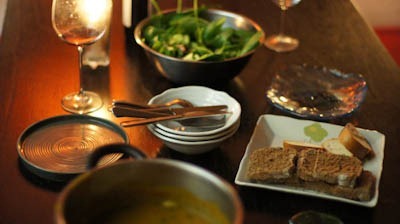I’m sitting outside the Viking Museum in Oslo Norway. The museum is closed, but the little ice cream stand in the otherwise empty parking lot is still open. I’m on my third ice cream.
Eating ice cream in Norway is about as nonsensical as it gets. The ice creams are the crappy kind you find in freezer chests at truck stops. Norway is the most expensive country on the Big Mac index (and easily the most expensive country I’ve ever visited), so each ice cream costs around $4 US. It’s not really warm here. Oh– and I don’t usually eat ice cream.
When I travel in new countries for short periods of time, say under a week, I allow myself to eat anything and everything. I do poorly with grey areas, so my diet is either 100% on or 100% off (although some things, like soda and margarine, are so offensive that I never eat them). It’s usually 100% on, but I recognize that with two or three days in a country, my time may not be best spent scouting around for a decently healthy restaurant. Also, I’m pragmatic enough to know that a few days of eating crap food probably won’t affect my long term health.
What I like most about these “cheat days” is how predictably they remind me that I like eating healthy. Because of my perceptions before beginning to eat healthy, I imagine that most people would find this hard to believe. I remember exactly what I thought when I realized that certain foods, sugar and flour, needed to be eliminated from my diet: “I have to do this, but it’s going to be a big sacrifice.” I was willing to make that sacrifice, but the reality of the situation turned out to be quite different than expected.
So for people interested in understanding what it’s objectively like to eat healthy, or for those trudging through the acclimatization process, I figured I’d offer a few paragraphs describing what it’s actually like.
There are sacrifices, to be sure, although they aren’t what I initially expected. The biggest downside is convenience: your restaurant options go from roughly every restaurant in the city to less than five. You usually can’t just get a meal on the go; you have to go out of your way. For example, when going skiing, there’s no food on the mountain that I can eat. So I have to make sure that I eat before skiing, and then drive ten minutes away from the mountain afterwards to the one healthy restaurant in Tahoe. This isn’t normally a big deal, but I’ll admit that when pressed for time, I think back to how convenient it was to just grab a burger and keep moving.
The other notable downside is that you become an inconvenience to your friends. If they want to eat with you, they have to go out of their way to one of your restaurants. Luckily these healthy restaurants tend to be good enough that even unhealthy eaters will enjoy them, but you still extend the inconvenience of limited selection to your friends.
Enjoyment of food isn’t the liability I thought it would be. After my five days of eating garbage in Oslo (with the greatly-appreciated exception of delicious Arabic food prepared by our friend Noor), we took the train to Stockholm, where Todd found a vegetarian buffet. The best analog for the feeling of eating healthy food after a period of eating dirty is to say that it’s like getting into bed after a long day of running around. Just as you don’t realize how tired you are until you hit the pillow, you don’t realize how much you love healthy food until you take that first bite of spinach-lentil soup. Our whole meal of beans, vegetables, and little else, was punctuated with us vocalizing how good the food was, almost involuntarily.
The first bite of junk food tastes good, even to someone accustomed to healthy food. The second is okay. By the end of the meal it’s a little bit gross and my stomach feels full in a way that feels natural only if you’ve never eaten healthily for a significant period of time. Half an hour after the meal I’m craving more junk food, even though my stomach feels a bit sloshy. I feel tired and usually think to myself, “That meal was so dumb.”
Eating healthy food is different. The first bite is good. So is the second. As the meal progresses, the food continues to taste as good as it did initially. After eating, I’m full but can still jog without feeling gross.
Transforming into a healthy eater isn’t a process of self-deprivation or sacrifice (at least in the long term), but rather an acclimatization to a better perspective on food. You can still stomach normal food if you have to, but it no longer takes will power to stay away from it. All it takes is eating it occasionally.
###
Photo is some clean and delicious food prepared by my friend Toby in Tokyo earlier this year.
I’m in the Stockholm airport now, headed for Iceland. Rumors of an upcoming new Life Nomadic video abound…
Some Tasksmash codes:
01745813
165EB1CA
7E688CE3
C71FADCB
08B26BCA
8FC943A6
23625B0F
6E17B421
3336151F
754A6A09
8CE0ED52
2F49B340
894FDB0D
AA2652EA
BA9E6A8A
4C5DE8CE
EA6E0B82
F622FBA4
4E3B2F90
DB7A25FC

Leave a Reply